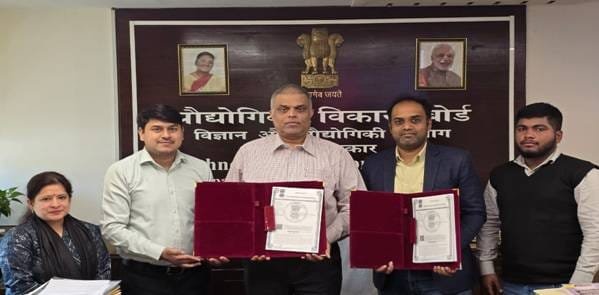Silver lining during festivities!
Restrictions on manufacturing, industrial, construction and consumption activities for the major part of Q1 FY2021 due to the imposition of nationwide lockdown primarily hurt the financial performance of the Indian Corporate sector.
This assessment was given by Shamsher Dewan, Vice President – Corporate Sector Ratings, ICRA on 3 Sept 2020 in a release on “Corporate India reels under the impact of extended lockdown; PBT margins contract to multi-year lows of 3.6% in Q1 FY2021”.
“The contraction in revenues was visible across most major sectors, but it was sharpest in consumer-oriented sectors where revenues contracted to nearly half of the year-ago levels, given customer wariness to effect purchases, especially large-ticket ones, because of the uncertain economic environment and erosion of purchasing power,” said Dewan.
Sectors like airlines, hotels, retail, automotive, consumer durables etc. which primarily comprises discretionary purchases, were significantly impacted, while other consumer-oriented sectors like FMCG and consumer foods were relatively less impacted given the essential nature of these purchases.
Stress was also visible across other major sectors, with the exception of select sectors like IT, Telecom, Sugar and Pharmaceuticals. Commodity-linked sectors contracted by 34% on a Y-o-Y basis with almost all the major commodity sectors, including Oil and Gas, Metals & Mining, Iron & Steel, Cement etc. reporting revenue contraction on the back of tepid realisations due to benign commodity prices and subdued volumes.
Industrial and Infrastructure-oriented sectors also contributed to the slowdown with 29% and 38% Y-o-Y de-growth respectively during the quarter, given the restrictions on activity, said Dewan.
Negligible revenues for the major part of the quarter, which impacted the absorption of fixed overheads, and lower realization in commodity sectors (especially metals and oil & gas), weighed on the profitability of India Inc., with PBT margins contracting to multi-year lows.
This was despite the benefit of subdued raw material prices and favourable rupee movement in select sectors like IT. Some of the key sectors with sharp margin contraction included airlines, hotels, retail, healthcare, gems & jewelry etc.
The sharp contraction in revenues given restrictions on operations impacted the absorption of fixed overheads in these sectors and many of them struggled to cover even operating costs.
In contrast, profitability indicators were relatively stable in sectors like cement, FMCG and power, supported by commodity tailwinds in a challenging demand environment.
During the current quarter, although the economic activity is only reviving gradually post lift of the lockdown, ICRA expects that margins would revive from these historic lows, supported by a better distribution of fixed overheads vis-à-vis the period of negligible sales in Q1 FY2021.
However, a sustained recovery to pre-pandemic levels is expected to be gradual given that the macro-economic environment continues to be weak, said ICRA in the release.
The interest coverage ratio of ICRA’s sample, adjusted for sectors with low debt levels (IT, FMCG and Pharma) also witnessed a Y-o-Y and sequential weakening to 2.1x from 2.6x in Q4 FY2020 and 3.6x in Q1 FY2020, highlighting the pressure on credit profiles of entities.
The pressure on earnings on account of the extended lockdown phase had a significant impact on the interest cover. Interest costs increased by 2% on Y-o-Y basis on account of increased reliance on borrowings to bridge the cash flow mismatches, while operating profits contracted by 31%, thereby having a negative impact on coverage indicators of India Inc.
Interest cover in stressed sectors like Iron & Steel, Construction and Real Estate hovered dangerously close to 1.0x, implying a hand-to-mouth situation for meeting even interest obligations.
During this period, the moratorium allowed by RBI on debt obligations would have produced much relief to such entities.
Despite the expectedly weak Q1 FY2021, key indicators of consumer sentiment indicate that most sectors are witnessing sequential improvement since June 2020 and gradually returning to pre-pandemic levels in Q2 FY2021 as lockdown restrictions gradually eased.
This has also been buoyed to a large extent by healthy rural sentiment, supported by two healthy crop cycles, the timely onset of monsoons, healthy reservoir levels and expectations of a healthy Kharif output, besides government’s support measures.
Accordingly, select sectors like tractors, two-wheelers etc. have witnessed faster recovery vis-à-vis earlier expectations.
Other indicators like freight activity, electricity and fuel consumption also indicate a healthy recovery to close to pre-pandemic levels as we progressed into Q2 FY2021.
Data on movement of goods on National Highways, as indicated by the Fastag and E-way bill volumes, shows recovery to 85% of pre-pandemic levels in July 2020, which was also visible in the railway freight and port tonnage data.
Similarly, while electricity demand has been lower on a Y-o-Y basis, it has almost recovered to pre-lockdown levels. Additionally, data on monthly diesel and petrol consumption suggests that fuel consumption has reverted to ~90% of pre-COVID levels despite firm prices.
However, select other sectors like aviation and hotels continue to face challenges, which are expected to continue over a prolonged period.
Despite domestic airline services having resumed for more than 100 days after the three-month-long suspension of operations, passenger traffic remains dismal at ~20% of FY2020 levels, given customer-wariness to travel. Similarly, the hotel sector also continues to grapple with historic-low occupancy levels.
Accordingly, recovery in these sectors is likely to be a longer-term phenomenon, given the discretionary nature of spend, and customer wariness that is likely to continue until a vaccine is made available commercially.
In terms of investment-related sectors like construction, the pace of recovery remains to be seen, given fiscal constraints, especially of state governments, due to the allocation of funds towards pandemic-relief measures.
“ICRA expects that India Inc is on the slow path to recovery and would deliver a sequentially better performance in Q2 FY2021 given easing of the earlier restrictions on economic activity,” said Dewan.
‘Healthy rural demand on the back of normal monsoons, healthy kharif sowing and government support in the form of increased MNREGA allocations, MSME guarantee loans etc. has been the silver lining in an otherwise bleak environment, offering some impetus to overall demand and economic recovery.
“Accordingly, select sectors have witnessed faster recovery vis-à-vis earlier expectations.
‘However, the rapid proliferation of the pandemic and intermittent regional lockdowns has the potential to further disrupt supply chains and consumer sentiments.
“Overall, the upcoming festive season over Q2 and Q3 FY2021 remains critical in determining the sustainability of recovery visible so far,” believes Dewan.
ICRA Analysis
The COVID-19 pandemic followed by extended lockdowns in the country, both nationally and then The Indian corporate sector, already grappling with a weakening macroeconomic scenario, faced major disruption because of the Covid-19 pandemic and two-month-long nation-wide lockdown imposed to combat the same.
Across sectors, the impact of the outbreak and lockdown was visible in the financial performance of corporate entities in Q1 FY2021.
An ICRA analysis of financial results of 489 companies in the Indian Corporate Sector (excluding financial sector entities) showed a Y-o-Y and sequential contraction in revenues with aggregate revenues contracting by 31.1% on a Y-o-Y basis in Q1 FY2021.
During the same period, the PBT margin contracted by 498 bps on a Y-o-Y basis, and by 70 bps sequentially to multi-quarter lows of 3.6%. #economy #COVID-19 #industries #exports #manuacturing #developments #infrastructure /fiinews.com










